
The Chinese translation for “Pepsi brings your ancestors back to life” was a product of mistranslation sometime ago. The brand’s slogan was to actually say “Come Alive with the Pepsi Generation.”
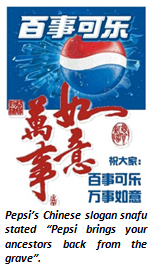
Another similar example is that of Coca-Cola. At the point of launching, it was discovered that their supposed interesting motto has been mistranslated to “female horse stuffed with wax” or “bite the wax tadpole” as the case may be with any of the dialects in Chinese. After careful examination, there was need for rebranding the name and slogan to suit the purpose and reputation of the brand. Therefore, they opted for “kekoukele” that is “happiness in the mouth” or “tasty fun”.
The examples above show that there used to be mistranslation not only in brand names or motto but generally when translating from one language to another. That is why content localization is vital. Content localization means trying to adapt or tailor your content to a specific location so as to relate and identify with the audience in the location. This goes beyond just rendering words from a source language in into the targeted language. It involves ensuring that your contents are tabled in such a way that it considers local cultural sensitivities. This makes sense because there are differences in the needs and interests in one culture from another culture.
It will not be wise to use the same approach for each and every locations you are targeting around the world because this will not present your brand to all the way it should. For example, the current trends in one geographical location may be far away from what is trending in another geographical location. In fact, that is where discrepancy in languages takes effect.
There are varieties of languages today. Many of the consumers who are users of these languages prefer to relate with brands in the language of their heart. As if that is not enough, a research suggests that roughly 40% of consumers will probably not but products because it’s not in their native language while the other 60% will still buy the products, however, they prefer having the products translated in their language.
In the localization process, translation from one language to another is the number one step. This is because localization is more than translation and it involves creating unique contents and experience that local consumers in your target market can quickly relate to. When you do this, you will not only create but you will be building sustainable local consumers all around the globe.
Now, let us delve more into what localization is.
What is content localization?
Content localization is the process of translating, transforming and overhauling the content you have created or produced for a target market to make sure that it is generally and culturally reasonable, understandable and acceptable in the new market you are trying to step into. This involves adapting or aligning the content translation to communicate and convey the intended message of your brand in the appropriate manner, tone, style and/or its overall concept.
Reasons localization is key to global growth
The more consumers feel connected to your brand the more they are willing to spend
People gets to feel relaxed with each other when they finally get connected with one another. Same it is with customers and your products, customers are willing to spend more when the feel connected to brands. A study observed shows that 57% are ready to increase their spending once they feel connected to a brand and about 76% will patronize such brand over their competitors.
What then should be done? The thing is that you need to trigger connection with consumers first. You can do this by creating and building contents that can spark local customers’ interest and cater for their need in the targeted market. Your contents should indicate that you are deeply interested in them and what they want. This will make your customers to feel at home, get relaxed, feel they are well understood, well respected and well taken care of.
For example, if you try to publish a South American concentrated ebook for an audience in the Asian-Pacific region you are definitely off the track. This is because, ordinarily, the audience in Asia-Pacific region will not be inclined to read such a material that is not focused or talking about their region. Same will happen if you are publishing an Asian-Pacific ebook for an African audience or vice versa. These audiences will not naturally want to read the published material as it has nothing to do with them and such material will be irrelevant to their lives and cultures.
The example above shows that you are to create contents that are unique for the specific market you are targeting because one man’s treasure is another man’s thrash.
In order to create unique content, follow the suggestions below:
1. Consider your choice of word:
Adapt your wordings to the target market. Use words that customers can quickly relate to. There are some times that two different countries speak the same language but there are variations in the way they use the language. A typical example of this is the British and American form of English language. The British uses the word ‘football’ while American uses ‘soccer’. If a British customer visits your page and notices the frequent use of the term ‘soccer’, he may quickly conclude you are not talking to him.
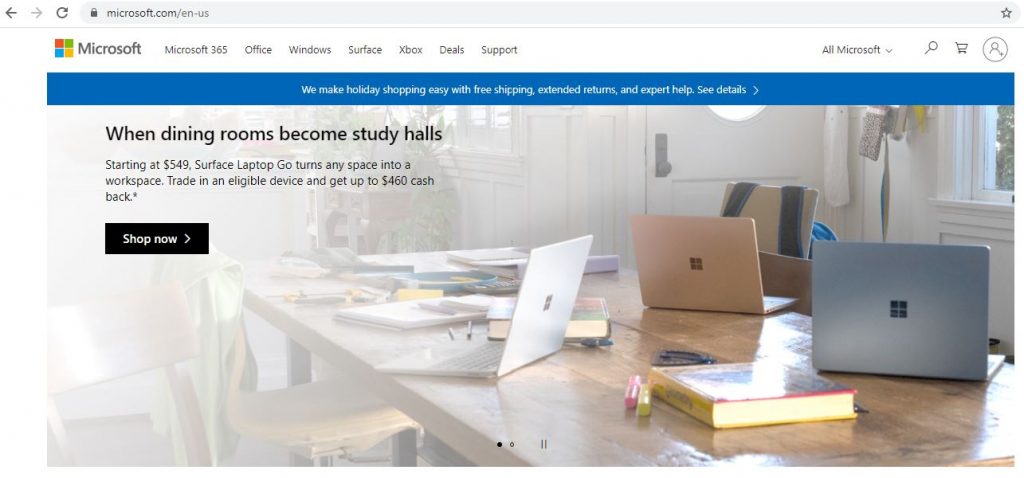
The Microsoft homepage for the US audience is slightly different from that of the Great Britain even though both location speak the same language i.e. English language. This is done to feature content that will be appealing to individuals from each of the locations.
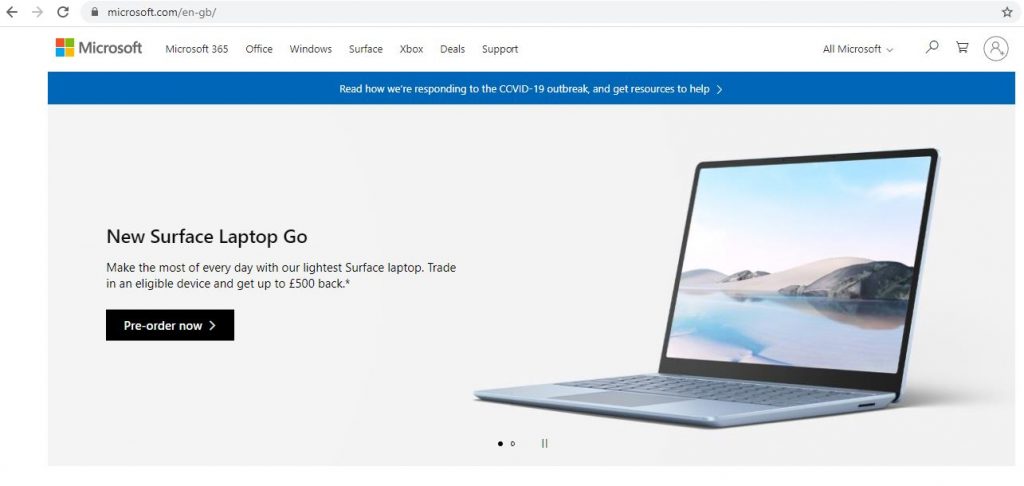
2. Insert local music culture references:
The music culture varies from one place to the other around the world. Gossips about celebrities, funny and trending memes in the country of interest can be a good idea in one place but a bad idea somewhere else. This is why you need to research trends that are pervasive in each targeted location before you begin generating contents that are localized. In whatever way you are doing this, make sure there is a mention of right cultural references.
3. Share pertinent stories:
Relevant stories that your audience can relate to should be shared.
For instance, if you are writing for an African audience, it will be best to use African names and characters in your stories. Also ensure that your story has elements of African culture and their lifestyle.
Let us take the popular clothing brand LOUIS VUITTON as an example. In their quest for expansion into the German and Dutch markets, they decided to translate and localize their website into German regardless of the fact that most of the people that form parts of the audience in the location understand English language. Doing this has without doubt increased their conversion rate in those locations.
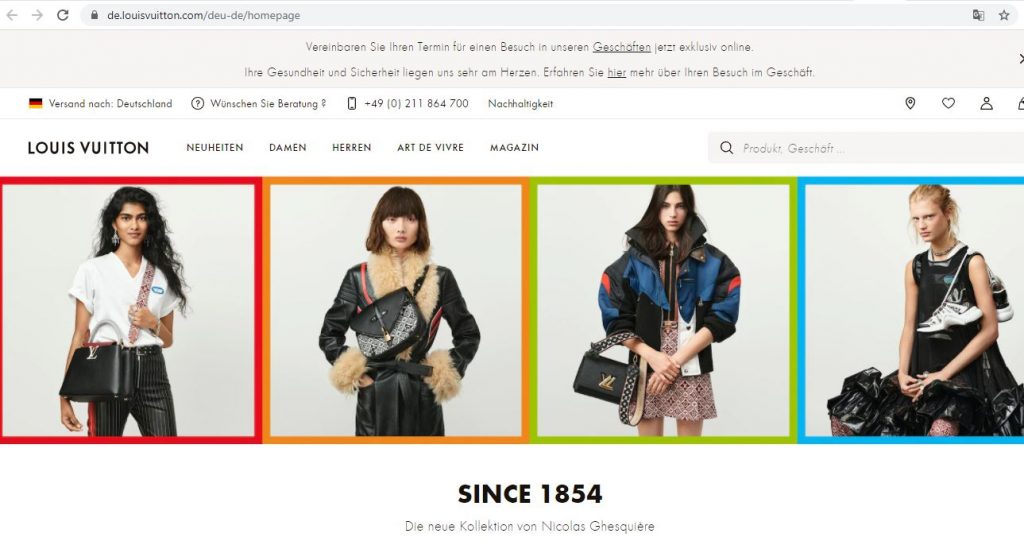
4. Maintain deep relationship with your loyal customers:
It is a very good idea to keep loyal customers because loyal customers are the best kinds of customers. They don’t just patronize you once as they are always ready to do that again and again. They also subconsciously advertise your products to others. It is important to gain more and more loyal customers because with them you more patronage and your brand will become source of discussion at parties anywhere in the world.
5. Appear in local search results:
The words of your site visitors varies from one place to another. So you might also be thinking that there is every possibility that search will be different from one place to another. The words they will be using to search for your products and services will differ from places to places.
With the help of localized contents, you will be able to use the right keywords that are unique to different markets these will make it easy for your site to dominate search results when there is a call for it.
If we are to call back the example of “football” and “soccer” earlier mentioned. If your content in the American audience is not properly localized, you will come to realize that American visitors will never come across your website when they search Google for “soccer” because they are not conversant with the use of that term.
6. Make provision for a personalized shopping experience:
Many customers still question only payments as they doubt that means of paying for goods and services. Now imagine using payment gateway that audience in your target market are not familiar with it. It will be very disastrous.
Use a variety of payment methods depending on the targeted market. For example, Boleto Bancario will be the right choice for online shoppers in Brazil because they can relate to it and it is easy for them to look for other brands that will give them such option if you have not provided one.
This is one of the reasons why many shoppers abandon their carts with no purchase. When it comes to localization, localize everything from first page to the check page. It is a vital way of keeping your customers engaged and providing an exciting online shopping experience for your customers.
In this article, we have discussed that localization is more than translation and it involves creating unique contents and experience that local consumers in your target market can quickly relate to. When you do this, you will not only create but you will be building sustainable local consumers all around the globe. You will become productive. You will have global audience patronizing you. And eventually have loyal customers that invite their friends to your page.
You can try to start website localization project for free on ConveyThis with immediate effect.
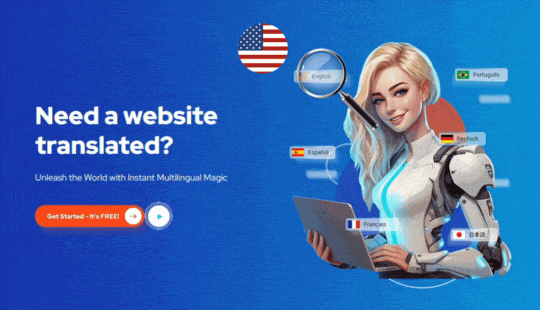

Ecommerce Trends You Should Know To Succeed In 2021 ConveyThis
January 24, 2021[…] we say localization, we mean adapting or aligning the translation of your contents such that it communicates and […]
Top Languages for your Business – Opportunities for Business Owners and Entrepreneurs ConveyThis
January 26, 2021[…] the right working tool you can expand the limit of your international audience. What tool is that? ConveyThis is the perfect answer to your translation and localization […]